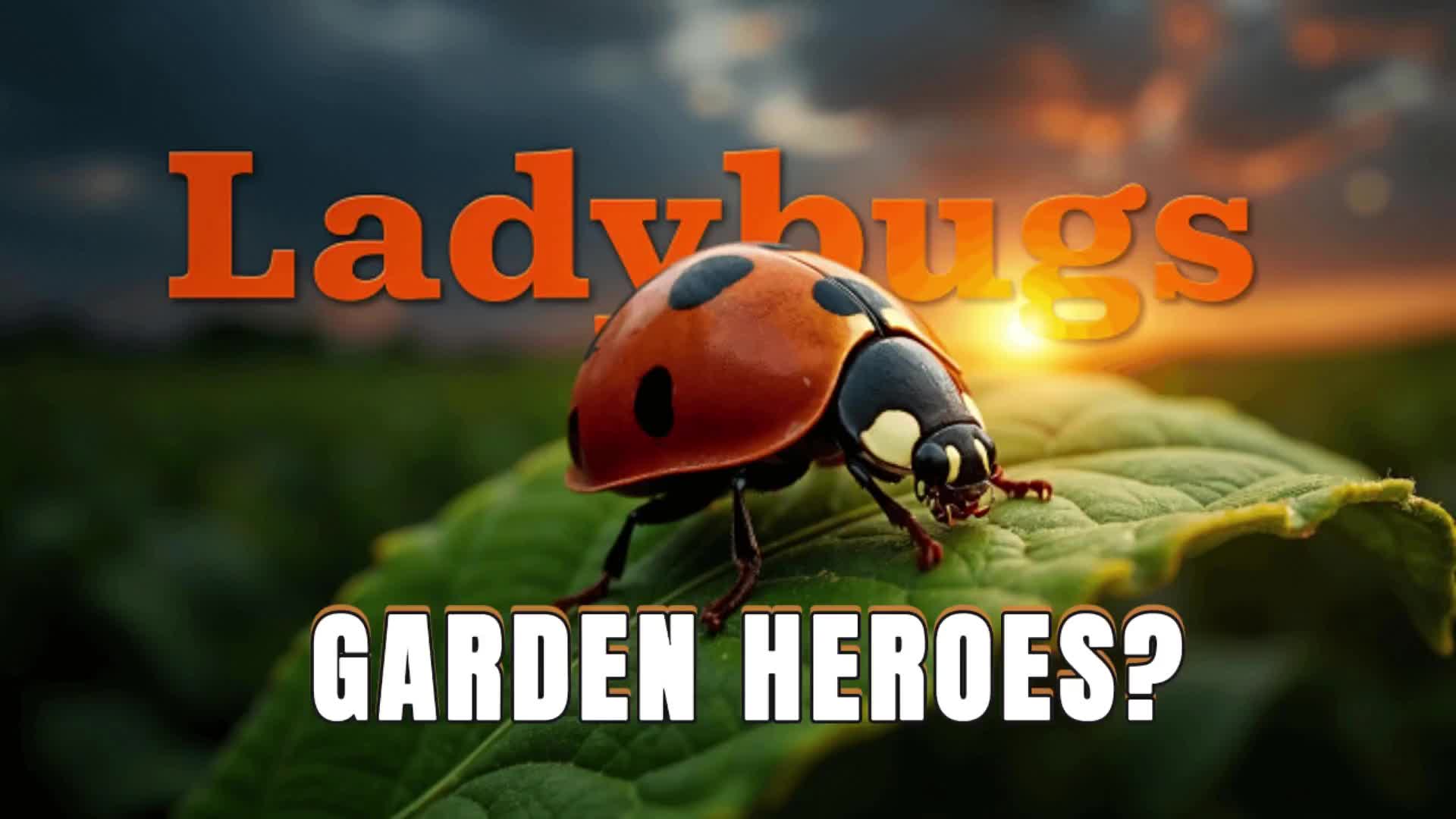Ladybugs: The Hidden Heroes of Your Garden

Hey there, nature lovers! Have you ever noticed those tiny, charming spotted beetles flitting around the flowers in your garden? Well, it’s time to delve into the incredible world of ladybugs. These fascinating insects are more than just pretty to look at—they play a crucial role in maintaining the health of your garden. Not only are they beautiful, but they also serve as natural pest control agents by munching on pesky insects that could harm your plants. Let’s explore the world of ladybugs!
Meet the Ladybugs
Ladybugs, also known as ladybird beetles, belong to the family Coccinellidae. Amazingly, there are over 6,000 different species of these beneficial insects worldwide. They have a significant role in controlling garden pests, acting much like tiny, colorful superheroes in your backyard.
Ladybug Facts at a Glance
Habitat: Ladybugs are found almost everywhere except Antarctica. They thrive in diverse habitats such as grasslands, forests, cities, and agricultural fields.
Diet: They primarily feast on aphids, scales, and mites, but some species also enjoy pollen and nectar.
Adaptability: Ladybugs are highly adaptable and can live in various environments, making them incredibly resilient.
Ladybug Habitats: Where They Thrive
Ladybugs can be found in almost every corner of the globe. Typically, they’re located in areas where their favorite food—aphids—is abundant. You’ll spot them in gardens, forests, grasslands, and even cities.
Their habitat choices often reflect the proximity to their prey. These beetles are highly adaptable and can adjust to various environments. From deserts to high mountains, ladybugs can withstand a wide range of conditions, which contributes to their resilience.
Ladybugs as Ferocious Predators
While they may appear cute and harmless, ladybugs are actually voracious predators. An individual ladybug can eat thousands of aphids throughout its lifetime. But that’s not all—they have a unique defense mechanism to deter their own predators. When threatened, ladybugs can secrete a foul-tasting fluid from their leg joints, making them less appealing to birds and other animals.
Their bright colors also serve as a warning to potential predators. This combination of strategies makes ladybugs highly effective at protecting themselves.
The Life Cycle of a Ladybug
The life cycle of a ladybug is truly fascinating and includes several distinct stages: egg, larva, pupa, and adult. During the larval stage, they are particularly active and consume the most pests.
Eggs: Females lay clusters of eggs on leaves where aphids are present.
Larvae: The larvae, which look quite different from adult ladybugs, emerge and immediately start feeding.
Pupae: After the larval stage, they enter the pupa phase, before transforming into adult ladybugs.
Adults: Full-grown ladybugs continue the cycle by feasting on pests and mating.
Threats to Ladybugs
Despite their resilience, ladybugs face threats from habitat loss, climate change, and invasive species. These challenges have led to a decline in ladybug populations in some areas, prompting the need for conservation efforts to protect these invaluable insects. Ladybugs are crucial biodiversity indicators and play an indispensable role in controlling pest populations.
Ladybug Diversity
Did you know there are over 47 species found in the UK alone? Each ladybug species has unique characteristics and plays a specific role in the ecosystem.
Some Interesting Facts:
They can hibernate in large groups during winter, seeking shelter under rocks or logs.
The name “ladybug” originated from European farmers who believed these beetles saved their crops.
In different cultures, ladybugs are associated with good luck and prosperity.
Bonus Fun Facts
Ladybugs have even been sent to space to study insect behavior in zero gravity.
With a big appetite, ladybugs can consume up to 5,000 aphids in their lifetime!
Ladybugs: Your Garden’s Best Friends
Ladybugs play a vital role in maintaining the balance of ecosystems by controlling pest populations. Their presence reduces the need for chemical pesticides, making them environmentally friendly pest control agents.
Key Takeaways
Natural Pest Controllers: They keep gardens healthy by reducing pest populations.
Colorful Defense: Their bright colors and foul-tasting fluid deter predators.
Cultural Icons: Seen as symbols of protection and good fortune across many cultures.
FAQs About Ladybugs
Q: How can I attract ladybugs to my garden?
A: Planting flowers such as dandelions, dill, and marigolds can attract ladybugs.
Q: Are all ladybugs beneficial to gardens?
A: Most are beneficial, but a few introduced species can be pests themselves.
Discover More About Nature
If you loved these fascinating facts, remember to keep exploring the wonders of nature. Ladybugs are just one of the many incredible creatures that make our world a healthier place. Share this knowledge and check out more resources to deepen your understanding of these amazing garden allies.
Check out National Geographic and BugGuide for more detailed insights into ladybug biodiversity and conservation.
Let’s continue to cherish and protect our tiny heroes!
By understanding and appreciating the important role ladybugs play in our gardens, we can contribute to biodiversity and a healthier environment. Consider adding more native plants to your garden to support these invaluable insects and encourage a vibrant ecosystem. Keep exploring nature’s wonders, and you’ll always find something fascinating.